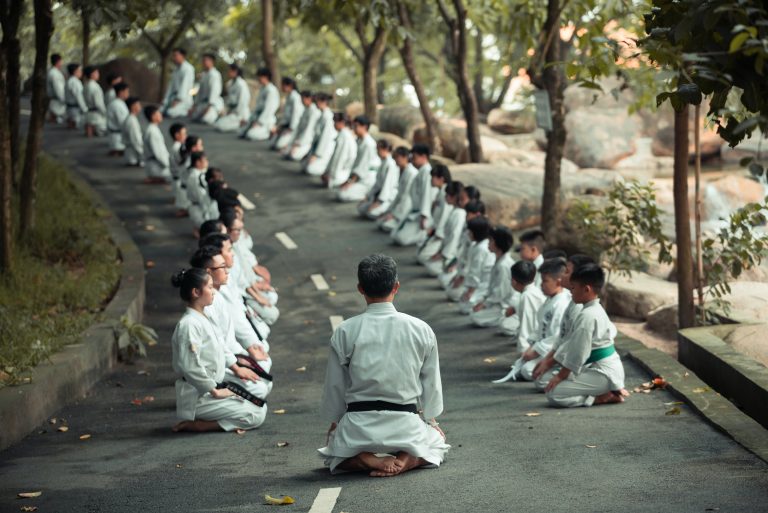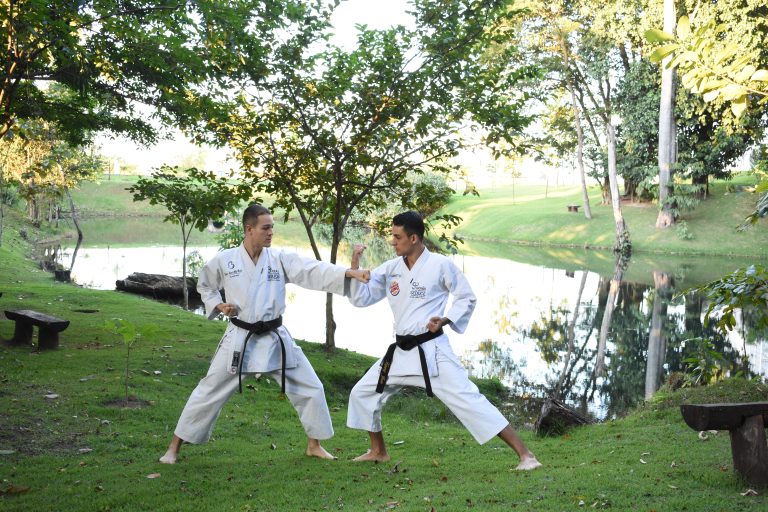“What Is the Difference Between Karate and Taekwondo?”
The martial arts of karate and taekwondo both originated in Asia and have been extremely popular in the West for decades. While both sports involve combat situations, they have critical distinctions that separate them. Knowing the differences between the two can help practitioners decide which martial art is right for them.
Origins and History
Karate has existed for centuries and is closely associated with Japan’s Ryukyu Islands. The original form of karate, called “te” or hand, relied on empty-handed strikes and a few weapons such as staffs. The art of karate continues to be popular worldwide and is divided into two main styles: Shotokan, which is characterized by linear footwork and powerful strikes, and Wado-ryu, which incorporates elements of jujitsu and has more circular footwork and softer techniques.
Taekwondo has more recent roots, emerging in the 1940s as a blend of other Korean martial arts, including taekkyon, along with elements from Japan’s Shotokan karate. It is the national sport of many countries, including South Korea. It is characterized by quick, spinning kicks and powerful blocks that neutralize an opponent’s attacks.
Body Structure
The body structure of a practitioner of karate versus taekwondo can vary significantly. Karate relies heavily on body weight transfer and requires stability so as to deliver power to targets. As such, karate practitioners have a distinctly low stance when they move, as this shift in weight helps generate more power. On the other hand, taekwondo relies heavily on fast, agile movements and leverages both speed and flexibility while attacking. As a result, a practitioner’s stance tends to be much higher in order to facilitate this rapid motion.
Rules and Competition
Both karate and taekwondo are highly competitive sports. However, the rules for competition vary greatly based on the style of martial art each offers.
Karate competitions are typically divided into two categories: kumite (sparring) and kata (forms). In kumite, competitors face off in one-on-one matches using pre-assigned techniques. The score is awarded based on the effectiveness of each technique used against an opponent. In kata, competitors perform a series of pre-assigned techniques in a specific order without any contact among opponents. The score is awarded based on the accuracy and technique of each individual’s movements.
Taekwondo competitions are typically broken down into four categories: sparring, collaborative self-defense (where two people move in coordination against a single opponent), destruction (a demonstration that includes breaking boards or bricks), and free styles (where a practitioner can use elements of self-defense). In sparring, kicks are either light or full contact, depending on the technique used and rules specified by the tournament organizers. Points are awarded based on the use of certain techniques and an opponent’s reactions to those techniques.
Conclusion
Karate and taekwondo are two distinct martial arts, each with its own distinct characteristics that make it unique from the other. Karate places a greater emphasis on stability and power and utilizes low stances when attacking, while taekwondo focuses more on speed and flexibility and emphasizes higher stances for quick movements for attacks. In tournaments and competitions, karate is typically broken down into kata and kumite, while taekwondo competitions are broken down into sparring, collaborative self-defense, destruction, and free style categories. When choosing between karate and taekwondo, potential practitioners should consider the differences between each sport to decide which sport best fits their individual needs.
The Origins and History of the World
When we think about the history of the world, we are essentially talking about the story of humanity and its evolution over time. From the very beginning of human life on earth, there have been numerous developments and changes that have altered the course of our planet’s past, present, and future. In this blog post, we will explore the most frequently asked questions about the origins and history of the world and provide insight into this fascinating subject.
1. How old is the world?
Many scientists agree that the Earth is approximately 4.5 billion years old. This estimation is based on the evidence found in rocks and minerals extracted from our planet’s surface, which reveal information about the formation of our solar system and the environment in which the Earth was created.
2. How did life begin on Earth?
The exact origins of life on Earth are still a mystery, but many scientists believe that it began in the oceans, around 3.5 to 4 billion years ago. The initial forms of life were probably single-celled organisms that eventually evolved into more complex life forms over time.
3. How has humanity evolved over time?
Humanity’s evolution can be traced back over six million years, to our earliest ancestors in Africa. These early humans evolved over time, developing distinct characteristics that would further set them apart from other species. As civilization evolved, humans experienced technological advancements that allowed them to settle in one place and develop agriculture, animal husbandry, and more.
4. How have civilizations developed over time?
The world has seen numerous civilizations throughout history, each with its unique cultures, beliefs, and advancements. Some of the most notable civilizations in ancient history include the Egyptians, Greeks, Romans, and Chinese. In recent history, we have seen the rise and fall of empires, such as the Ottoman Empire and the British Empire.
5. How has technology impacted the course of history?
Technology has been a major driving force in history, allowing humans to advance in numerous ways. From the invention of the wheel to the development of computers, technology has had a profound impact on how societies operate, communicate, and grow.
6. What significant events have shaped the course of history?
Throughout history, there have been many significant events that have changed the course of human history. These events include the invention of writing, the rise and fall of empires, world wars, and major scientific discoveries such as DNA and the theory of evolution.
7. What are some characteristics of ancient civilizations?
Ancient civilizations were known for their unique cultures and advancements in various areas such as science, art, and agriculture. They developed complex trade systems and often held strong beliefs in religion and mythology. Many of these civilizations constructed remarkable structures that still stand today, such as the Pyramids of Giza and the Great Wall of China.
8. What are some of the most significant discoveries in human history?
Throughout history, there have been many remarkable discoveries that have paved the way for further scientific advancements. Some of the most significant discoveries include electricity, penicillin, the microscope, and DNA.
9. How has globalization impacted the course of history?
Globalization has been a major driving force in shaping the modern world, as it has enabled the easy exchange of ideas, communications, and technology. It has facilitated the growth of global trade, which has led to the opening of new markets and job opportunities worldwide.
10. What will the future hold for the world?
Although it is impossible to predict the future, there are numerous trends and possibilities that may shape it. Developments in technology and scientific research are expected to continue, and climate change is likely to become an increasingly important issue in the coming years.
Conclusion
The history of the world is fascinating and complex, and there is still much that remains to be explored and discovered. By gaining a deeper understanding of our past, we can better appreciate the present and prepare for the future. Whether we are exploring ancient civilizations or the latest advancements in technology, the story of humanity is one that is continuously evolving, and it is up to us to shape its next chapter.
Inhaltsverzeichnis





